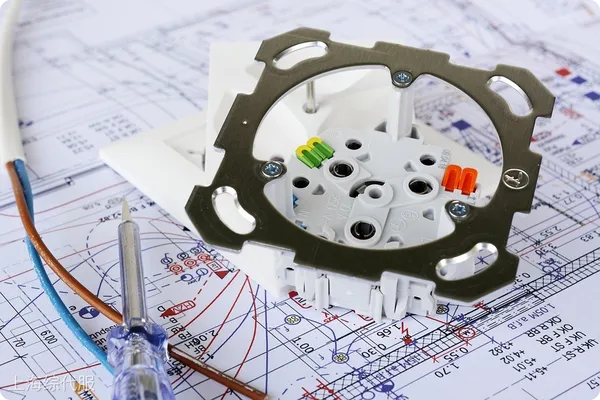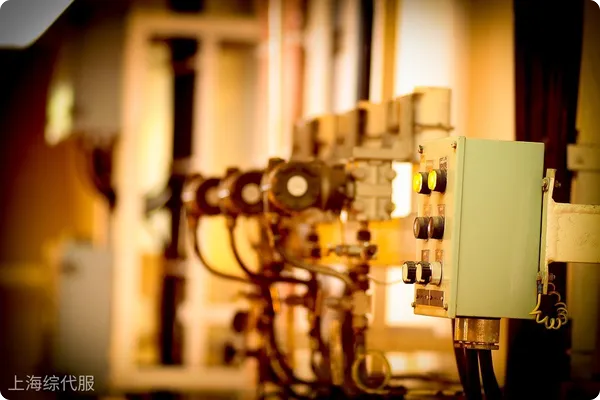In recent years, China's electrical machinery and equipmentExport to CanadaWith the continuous advancement of global economic integration, China, as a major manufacturing country, has continuously improved its production capacity and technical level in the field of electrical machinery and equipment, laying a solid foundation for exports to the Canadian market.
At present, China's electrical machinery and equipment and its parts, recorders, televisions and other products occupy an important position in exports to Canada. However, the export volume has declined in the past three years, but it still has a large market share. So, what procedures are required for exporting Chinese electrical machinery and equipment to Canada, and what precautions are there? Here is a guide for everyone, please check it out!

I. Overall export process
1. Market research and preparation
Understand the needs and competition of the Canadian market, as well as local import regulations, tariff policies, etc. Ensure that electrical machinery and equipment meet Canadian technical standards and safety requirements, and adapt products when necessary.
2. Business Number Registration
- Obtain an import and export business number: Register with the Canada Revenue Agency (CRA) to obtain a business number, which is necessary to carry out import and export activities.
3. Product classification
- Determine the Harmonized System (HS) code: Classify products accurately, using the appropriate HS codes to identify applicable tariffs and regulations.
4. Signing of export contract
Negotiate contract terms with Canadian customers, including price, quantity, quality, delivery date, payment method and dispute resolution mechanism, and sign a formal export contract.
5. Export Permit and Registration
According to the type of electrical machinery and equipment to be exported, the destination and China's export policy, confirm whether it is necessary to apply for an export license, and file the export record with the local commerce department or customs to obtain necessary information such as the export cargo number.
6. Product certification and inspection
In accordance with relevant Canadian laws and regulations and certification standards, obtain corresponding certifications, such as CSA certification, IC certification, etc., and contact local Chinese commodity inspection agencies to conduct product inspections, go through export commodity inspection procedures, and obtain commodity inspection certificates.
7. Transportation and Insurance
Choose the appropriate mode of transportation, such as sea, air, land, etc. When choosing a mode of transportation, the enterprise should make comprehensive considerations based on the actual situation of the goods, such as the characteristics of the goods, time requirements, and cost budget, etc. In addition, it is necessary to book a space with a freight forwarder or shipping company, arrange shipment, and deliver the goods. At the same time, insure the goods for export transportation insurance to reduce transportation risks.

8. Customs declaration and clearance
Prepare export contracts, invoices, packing lists, commodity inspection certificates, export licenses and other related documents, and submit the above information to the Chinese Customs for export declaration and obtaining export goods release documents. In addition, you need to assist Canadian customers or agents to complete customs clearance procedures in the importing country.
9. Collection and cancellation of foreign exchange
Collect payment according to the payment method agreed in the contract, submit relevant documents to the State Administration of Foreign Exchange, and go through the export exchange verification procedures.
10. After-sales service and tracking
In accordance with the contract agreement, we provide after-sales service and technical support to Canadian customers, pay attention to the transportation of goods, ensure the safe delivery of goods, and collect customer feedback to optimize products and services.
II. Relevant regulations and certification standards
1. Laws and Regulations
- Canadian Electrical Code (CEC): Specifies safety requirements for the installation, use, and maintenance of electrical equipment to ensure the safe use of electrical equipment in Canada.
- Canada Consumer Product Safety Act (CCPSA): Aims to protect Canadian consumers from unsafe products. As a type of consumer product, electrical machinery and equipment must comply with the requirements of this regulation regarding product safety, performance, etc.
- Hazardous Products Act (HPA):If electrical machinery and equipment contains certain dangerous substances or components, such as lead, mercury and other harmful substances, or has designs that may cause dangers such as sharp edges and high-temperature surfaces, it is necessary to comply with the requirements of the law on the classification, labeling, packaging and instructions for use of dangerous products to ensure the safety of consumers during use.

2. Certification standards
- CSA Certification:It is a strict safety certification for products conducted by the Canadian Standards Association, covering a wide range of electrical machinery and equipment products. Products that have obtained CSA certification indicate that they have reached a high level in terms of safety, reliability and quality, and can be legally sold and used in the Canadian market.
- ISED Certification: Formerly known as IC certification, it is managed by the Canadian Department of Innovation, Science and Economic Development (ISED) and is applicable to electronic products involving electrical safety, such as power adapters, chargers, TVs, computers, etc., to ensure compliance with Canadian safety standards and technical specifications.
- UL certification + cul mark: UL certification is a safety certification issued by the National Safety Standards Institute of the United States, but in the Canadian market, electrical equipment with UL certification and the cul mark is also recognized.
- ETL certification + cetl mark:ETL certification is also an electrical product safety certification in the United States. In Canada, products with ETL certification and affixed with the cetl mark can meet the entry requirements of the Canadian market.
- Energy efficiency certification: Certain electrical equipment must comply with energy efficiency standards set by Natural Resources Canada (NRCan) and obtain an energy efficiency verification mark from a certification body accredited by the Standards Council of Canada (SCC).
3. Packaging label
- Language requirements: Canada is a bilingual country with both English and French. The text information on product packaging must be accurate and clear. In addition to English, relevant information must also be marked in French.
- Product information label: Basic information such as product name, model, specifications, rated voltage, rated power, etc. must be clearly marked so that consumers and regulatory agencies can clearly understand the characteristics and parameters of the product and ensure correct use and safe operation.
- Certification mark:The corresponding certification mark should be displayed according to specific requirements to show that the product complies with the relevant Canadian certification standards and enhance consumers' trust in the product.
- Origin mark:需標明產品的原產地,如 "Made in China"。
- Safety warning signs: For possible safety risks, such as high temperature surfaces, sharp edges, electric shock hazards, etc., clear graphic and text labels should be used on the packaging to warn users to pay attention to safety.
- Packaging material identification: If the packaging material is recyclable, it should be marked with information such as the composition of the packaging material and the recyclable symbol in accordance with Canada's relevant environmental protection requirements to facilitate recycling.
- Other requirements:The packaging must also include the name and address of the manufacturer or distributor so that timely traceability and contact can be made if there is a problem with the product. In addition, depending on the characteristics of the product and Canadian regulatory requirements, some other specific information may also need to be marked, such as shelf life, storage conditions, etc.
I hope the above content can serve as a reference for you to export to Canada. If you need further support, please contact the service agent.Export agent, we will provide you with convenient, efficient and secure agency services to make your export journey smooth!


 Follow customer service WeChat
Follow customer service WeChat